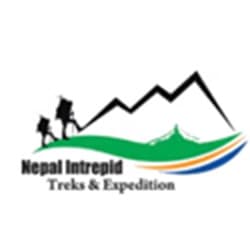If the Himalayas plan to throw a party, Nepal would be the adventurous host with trekking boots, while Bhutan would arrive draped in silk robes, carrying a bag full of festivals. Together, these beautiful destinations would be so perfect and make you wonder why you didn't jump into the party.
Travelling to Nepal and Bhutan is not just picking a spot on the map. Visiting these two countries is like choosing the perfect moment to take a selfie. The scenery is always breathtaking, but the season can bring all the differences. So, which is the best time to travel Nepal and Bhutan? If you arrive in spring, you will be greeted by blooming rhododendrons and locals celebrating colorful festivals. If you show up in monsoon, then you spend more time dodging leeches than admiring mountains. Planning to visit in winter? Then your nose might freeze before the camera does.
So if you are planning to visit, then timing is everything that decides what to offer you. Choosing the right season can give you a postcard-perfect view of Everest, a front row seat at Bhutan's grand Tsechu dances. You can also get peaceful moments in quiet valleys where the only sound in prayer wheels spinning in the breeze.
This guide will take you through the best time to travel Nepal and Bhutan. Briefly discussing season by season, month by month aspects and with a peek into festival activities and some little secrets that make each period special. No matter if you are a trekker chasing trails, a culture lover chasing festivals, or maybe someone chasing peace of mind, this will be your roadmap to Himalayan bliss.
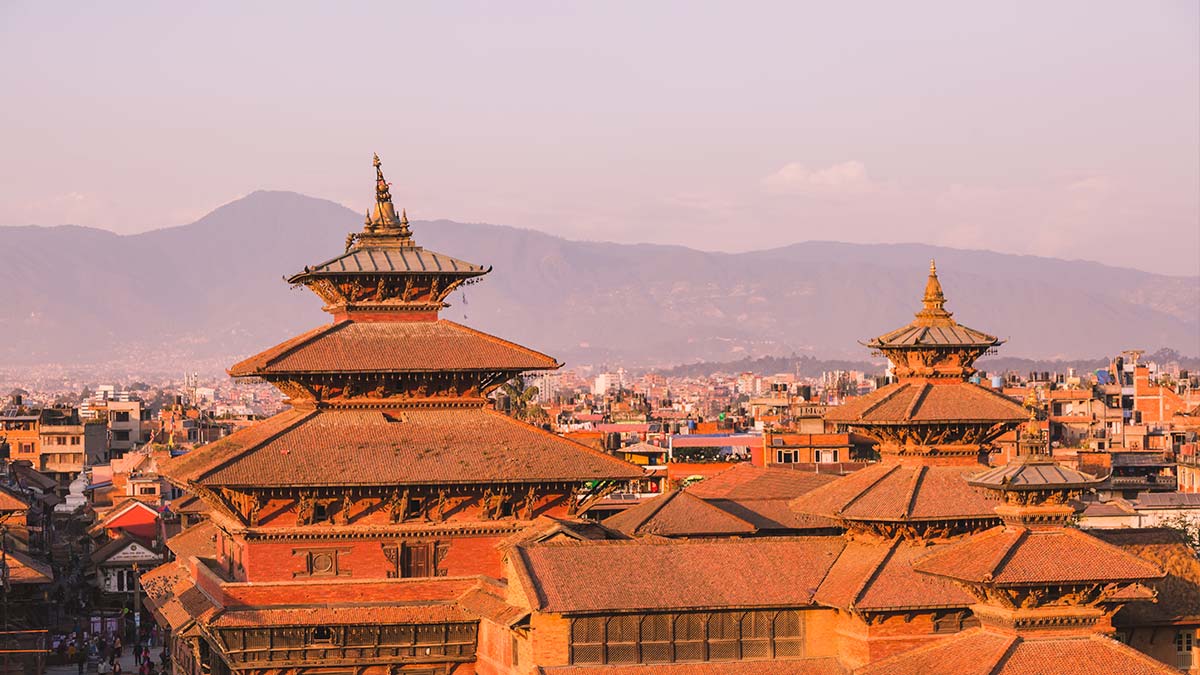
Why Timing Matters for Nepal and Bhutan?
The beauty of Nepal and Bhutan is deeply tied to their geography and changing seasons. These two countries lie in the lap of the Himalayas, where altitude variation creates quick shifts in weather. Here, a valley may be sunny and warm and higher trails remain snowbound.
Timing is crucial for all travellers because it directly affects visibility, accessibility and overall experience during the trip. Trekkers depend upon clear skies for safe mountain routes and panoramic views. If you are a cultural traveler, then you should plan your trips around major festivals by following the specific calendars. If you are a wildlife enthusiast, then you must consider when parks and reserves are most active.
Visiting in the wrong seasons may limit your activities. As heavy monsoon brings landslides and leeches and deep winters restrict access to high passes. So, right timing and understanding the best time to travel Nepal and Bhutan can reward you with breathtaking landscapes, vibrant celebrations and a smooth journey. To put it in simple words in the context of Nepal and Bhutan, when you go is just as important as where you go.
Best Time to Visit Nepal
Nepal is the blessed land of striking contrast. Here, you can experience the soaring peaks of the Himalayas to the subtropical jungle of Chitwan. The country's weather shifts dramatically on the basis of altitude and season. The best time to visit Nepal depends on what you want to do, whether you want to do trekking, wildlife safaris, cultural tours, or simply soak in the mountain views. Here is a detailed look at Nepal's season and month-to-month guide, which will help you to plan your trip to Nepal.
Spring Season (March - May)
Spring is one of Nepal's most celebrated travel seasons. In this season, temperatures are warm but not scorching, which is ideal for trekking. The hills burst into color as rhododendron bloom, skies remain clear, offering excellent views of peaks like Annapurna and Everest. Popular treks like Annapurna Circuit and Everest Base Camp see increased activity during this time. Major highlights of the season are the rhododendron forest, comfortable weather and strong visibility. This season is best for trekkers, photographers and cultural travellers.
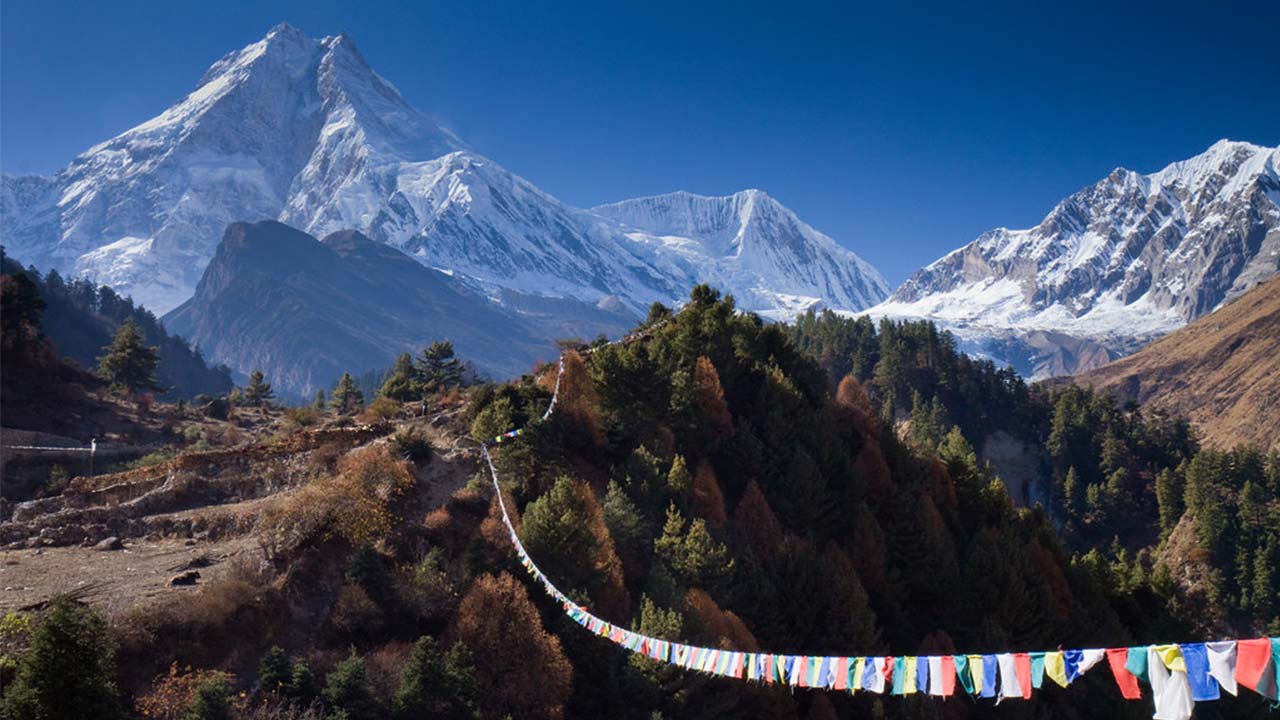
Summer/ Monsoon Season (June - August)
Summer brings heavy monsoon rains, where trails become muddy, landslides are possible and mountain views are often obstructed. However, summer paints Nepal in lush green, making the countryside look vibrant. Only a few tourists visit during these months and prices for accommodations and tours are lower. Major highlights are the lush landscape and quieter trails. You have to face challenges like leeches on trekking routes, flight delays and slippery trails. This season is best for budget travel, cultural immersion and exploring rain shadow areas like Upper Mustang and Dolpo.
Autumn Season (September - November)
It is the most popular season in Nepal when the monsoon clears away dust and pollution, leaving behind crystal clear skies. Days are warm at this time, nights are cool and visibility is at its best. Major Hindu festivals, Dashain and Tihar add cultural vibrancy. It is a perfect period for high altitude treks, mountain flights and sightseeing. Major highlights of the season are clear skies, festivals and ideal trekking weather. This time is best for trekking, mountain expeditions and cultural tours.
Winter Season (December - February)
Nepal can be cold in the winter season, especially in high mountains where snowfall makes certain trails inaccessible. Lower altitude treks such as Ghorepani, Poon Hill, or Langtang remain pleasant. Cities like Pokhara, Kathmandu and Chitwan are cooler but comfortable, making cultural and wildlife tours enjoyable. Major highlights of the season are snow-covered peaks and fewer tourists. You can face challenges like extreme cold in higher regions and some routes may be closed. This time is best for low altitude trekking, wildlife safaris and cultural sightseeing.
Month by Month Breakdown
- January is the coldest month with snow in the Himalayas, but best for lowland tours and wildlife safaris.
- February is slightly warmer, lower regions trekking is pleasant and the skies are clear.
- March is the start of spring when the rhododendron blooms and trekking trails become lively.
- April is warm and colourful, a perfect time for trekking across most regions.
- May is hotter in lower trails, but still great for before monsoon treks.
- June is the beginning of the monsoon, good for visiting Upper Mustang and Dolpo.
- July is the time of peak monsoon, you can enjoy the lush landscape, but the trails are muddy.
- August is still the rainy season, with cultural immersion possibilities in the Kathmandu valley.
- September is the end of the monsoon, when skies are clear and trekking season begins.
- October is a peak season, has excellent weather, major festivals, with packed trails.
- November will offer crisp air with clear skies and an ideal time for trekking and mountain flights.
- December is cold in high altitudes but suitable for lowland treks and cultural travel.
In summary, autumn and spring are widely regarded as the best time to visit Nepal, especially for trekking and mountain views. Even off-season months offer their own charm to those who seek quieter and affordable experiences.
Best Time to Visit Bhutan
Bhutan is the “Land of the Thunder Dragon ” famous for its pristine landscapes, vibrant festivals and peaceful atmosphere. Like Nepal, its weather is also heavily influenced by altitudes, which range from subtropical plains to alpine valleys. Choosing the right season is essential to experience its monasteries, mountain treks and cultural celebration at their finest.
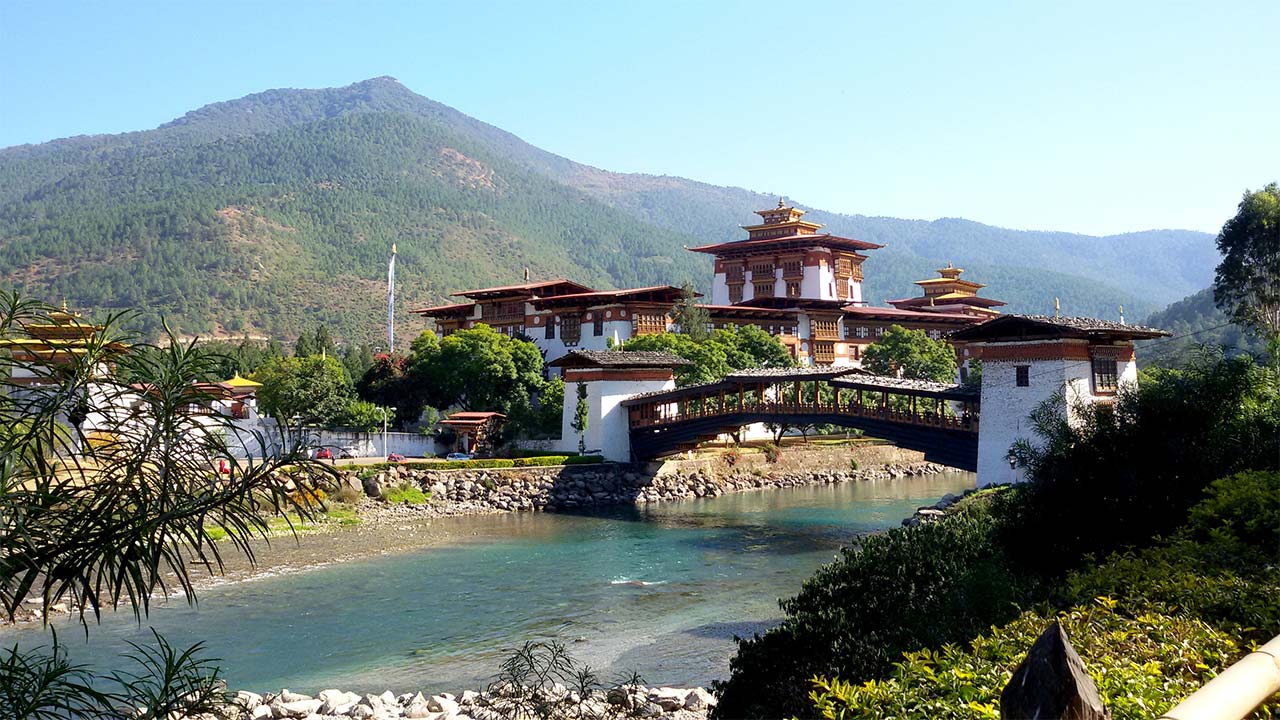
Spring Season (March - May)
Spring is one of the most delightful times to visit Bhutan. The valley blooms with rhododendron, magnolias and wildflowers, which creates breathtaking scenery. The weather is mild, and the skies are generally clear. Festivals such as Paro Tshechu draw thousands of visitors from around the world. Trekking routes are open, making it a great time for outdoor adventure. Major highlights of this season are the flowering landscape, Paro Tshechu festival and excellent trekking conditions. This time is best for Hikers, cultural lovers and photographers.
Summer/ Monsoon Season (June - August)
Monsoon rain dominates the summer months. Although landscapes become lush and green. Heavy rainfall can limit outdoor activities, causing muddy trails. This is the least crowded season, which offers lower prices and a quieter experience. In certain regions, particularly the east remains more accessible. Major highlights of the season are the verdant countryside and fewer tourists. You have to face challenges like heavy rainfall, leeches on trails and occasionally flight disruptions. This season is best for offbeat travellers, for cultural exploration and birdwatching.
Autumn Season (September - November)
It is arguably the most popular time to visit Bhutan, where skies are clear, temperatures are comfortable and visibility is at its peak. It is a perfect time for admiring the Himalayan peaks. Major festivals, including Timphu Tsechu, are celebrated with traditional music, dance and rituals. The best time for trekking and cultural sightseeing is highly rewarding. Major highlights of the season are clear skies, major festivals and ideal trekking weather. It is the best time for Trekkers, festival goers and cultural travelers.
Winter Season (December - February)
Bhutan brings chilly mornings and evenings in winter, especially in higher altitudes. Days are often sunny and pleasant. You can find snow in the Northern region, while valleys like Punakha remain relatively mild. This is a peaceful time to visit monasteries and cultural tours with fewer tourists. Festivals like Punakha Drubchen add charm to the season. Major highlights are sunny days with fewer tourists and the Punakha festival. You can face challenges like cold nights in higher altitudes, while some trekking routes are closed. This time is best for cultural sightseeing, photography and low altitude hikes.
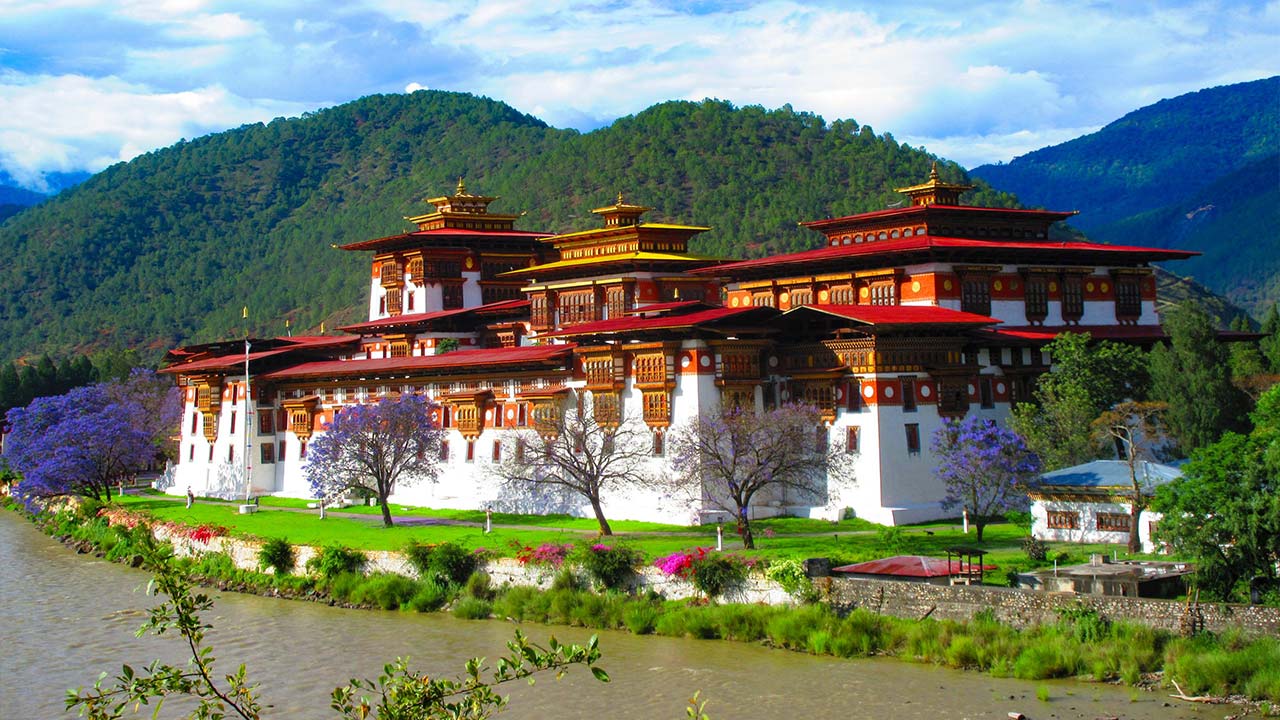
Month by Month Breakdown
- January is cold, but sunny and low-altitude regions are pleasant.
- February is gradually warming and good for cultural tours and lower treks.
- March is the start of spring, when valleys bloom and the great trekking season begins.
- April has ideal weather and the Paro Tshechu festival draws larger crowds.
- May offers warmer temperatures when rhododendrons are still in bloom and good for hiking.
- June consists of Monsoon sets with fewer tourists and greener landscapes.
- July has rainy and humid weather, where you can explore culture in urban centers.
- August is still rainy but great for budget-friendly travel and possibilities of birdwatching.
- September offers the end of monsoon, clear skies and the trekking season starts.
- October is the peak season of Thimphu Tshechu with superb mountain visibility.
- November offers you crisp, clear weather, excellent for trekking and fewer tourists than in October.
- December has cold nights with sunny days, where cultural tours thrive.
In summary, the best time to visit Bhutan is spring and autumn when weather conditions are perfect and major festivals are added to the experience. Those who are seeking solitude during winter are peaceful and culturally rich. The Monsoon months suit adventurous travellers who don't mind rain.
Nepal Vs Bhutan: Seasonal Comparison
Nepal and Bhutan, both countries, shine throughout the year, but the experience differs depending on the season and region. So, for a better understanding of best time to travel Nepal and Bhutan let’s move further with a comparison between their climates, activities and cultural highlights can help travellers to decide the best time to plan their visit.
Shared Best Months
- Spring and Autumn are universally the best periods to visit both countries.
- These months have clear skies, pleasant temperatures and vibrant festivals, which are ideal for trekking, sightseeing and cultural immersion.
Weather Differences
- Nepal experiences more altitude variation, which affects accessibility to high mountain treks during winter and monsoon.
- Bhutan has milder weather in the valleys, but still, northern treks are snowbound in winter.
- Monsoon rains are heavier in Nepal, but Bhutan's eastern region remains comparatively drier.
Activities Focus
- Nepal is renowned for trekking and adventure tourism, with Everest, Annapurna and Langtang attracting hikers the whole year.
- Bhutan focuses more on cultural experience, festivals and moderate treks with monasteries and Dzongs offering unique seasonal charm.
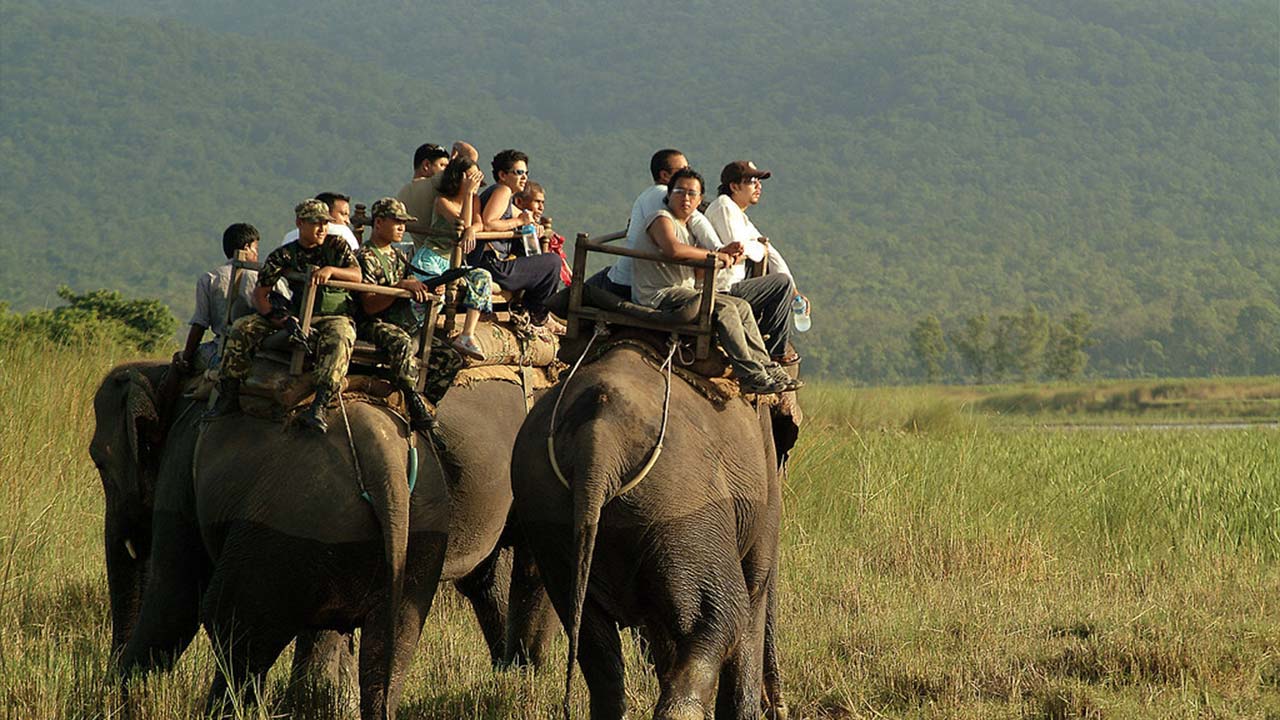
Crowd and Budget Consideration
- Peak season brings higher prices and crowded trails in both countries, particularly in Nepal's trekking routes.
- Off-season travel, like in monsoon or winter, offers lower costs with more solitude but may restrict some activities.
In conclusion, to those travellers who are seeking the best combination of scenery, culture and accessible adventure, spring and Autumn are your optimal window. While choosing between these two countries depends on your priority, whether it is high altitude trekking or festival-rich cultural experiences.
Festivals and Cultural Highlights
These two countries Nepal and Bhutan are not just about mountains; their vibrant festivals provide a unique window into local culture and traditions. Great timing for your visit coincides with these events, which can enrich your experience.
Nepal
- Dashain (September - October): It is Nepal's largest Hindu festival, which celebrates the victory of god over evil. Cities and villages are alive with rituals, family gatherings and animal sacrifice.
- Tihar (October - November): This is the festival of lights. Home and streets are decorated with jamos candles and colourful rangoli.
- Holi ( March): Famous festivals of colors which bring joy, music and lively street celebration across the country.
Bhutan
- Paro Tshechu (March - April): Major religious festival featuring mask dances, traditional music and prayers at Paro Dzong.
- Thimphu Tshechu ( September - October): Bhutan's most famous festivals, which attract thousands of local tourists to witness masked dances and rituals.
- Punakha Drubchen ( January - February): A historic reenactment of battle victories celebrated with colourful processions and cultural performances.
Attending the festival will allow travellers to engage with local traditions, sample regional cuisine and enjoy performances which have been preserved for centuries. If you plan your trips around these festivals, it not only adds color to your journey but also offers a deep cultural understanding of both countries.
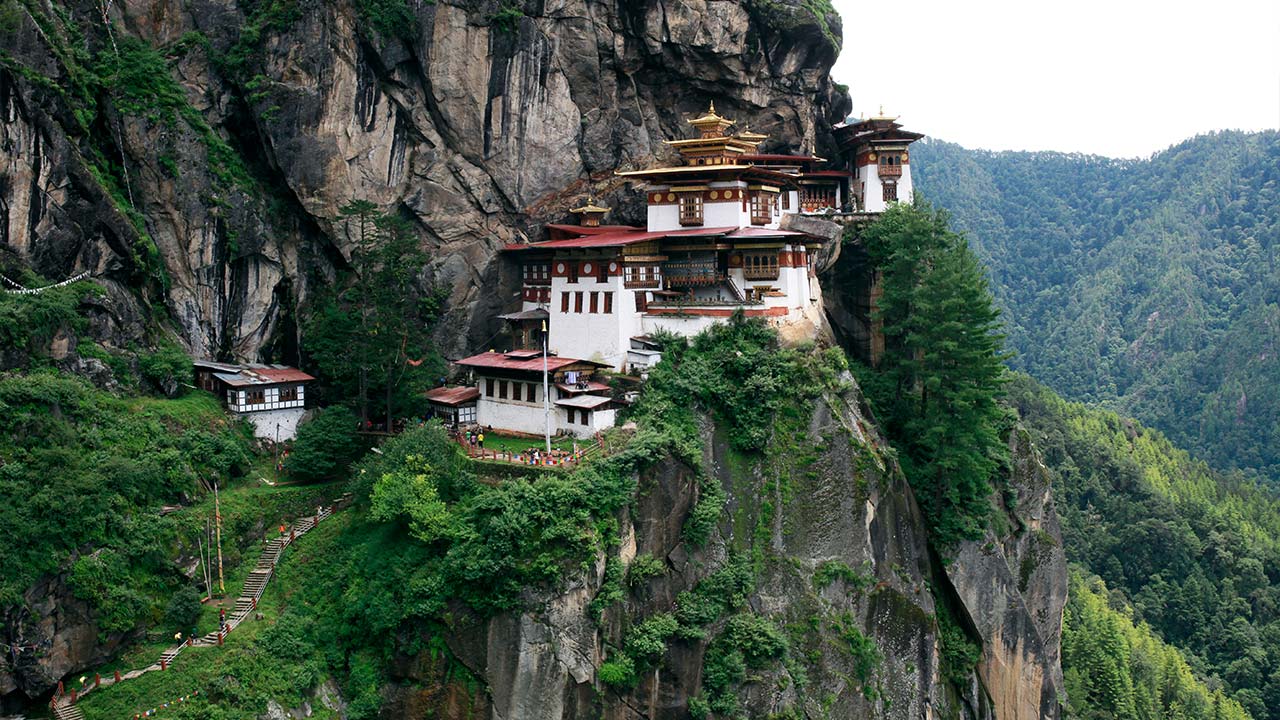
Travel Tips for Choosing the Right Time
If you have to select the best time to travel Nepal and Bhutan it requires more than checking the calendar. It is about aligning your preferences with the weather, activities and cultural opportunities.
- Plan ahead for peak season: As spring and Autumn are ideal for trekking and festivals, but accommodations and flights fill quickly. So book early and secure your spots.
- Pack smart: As the weather can vary dramatically with altitude so layered clothing is essential for trekking. Rain gear is necessary during monsoon months.
- Consider your interest: Adventure travellers prefer clear skies for high altitude treks, while cultural enthusiasts may focus on the festival schedule.
- Off-season advantage: While the monsoon and winter months offer free crowds and lower costs. You may have restrictions for trekking and outdoor activities.
- Health and safety: you should ensure your travel insurance, altitude preparedness and take vaccinations as needed.
If you align your travel goals with seasonal conditions, you can maximize both comfort and experience. It also helps to make your Himalayan journey truly memorable.
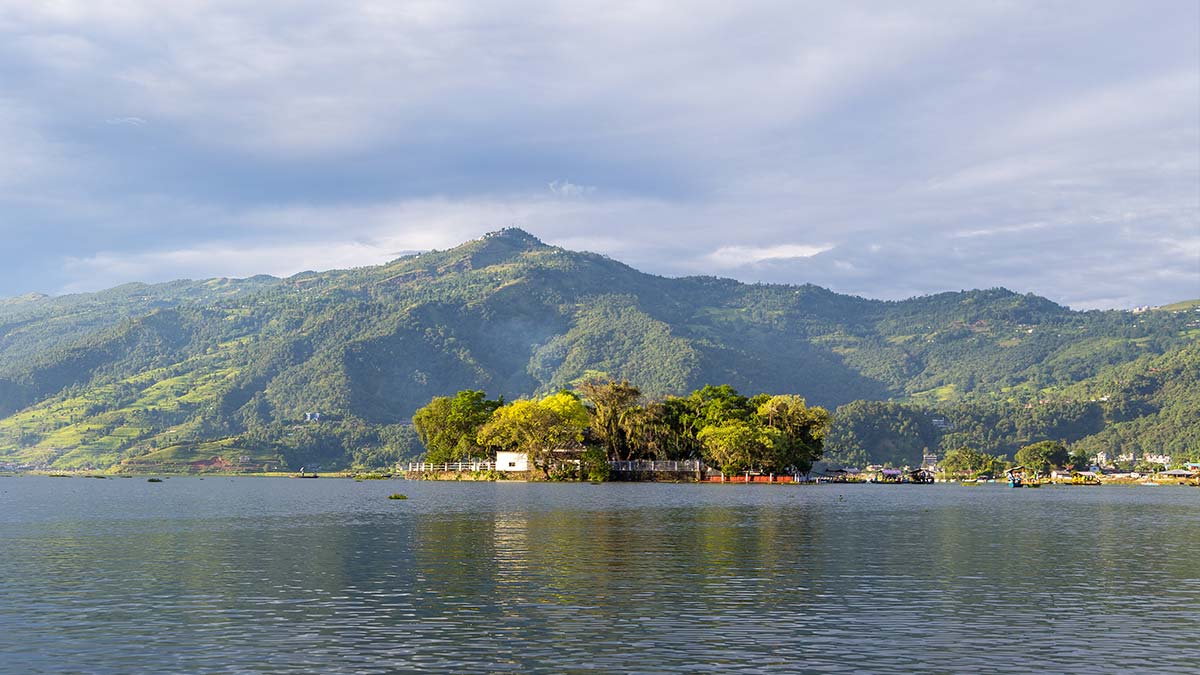
Conclusion
Both of these countries, Nepal and Bhutan, offer you unparalleled beauty, rich culture and unforgettable experiences. The timing of your visit can make all the difference. Spring and autumn stand as the best time to travel Nepal and Bhutan as these seasons feature clear skies, comfortable temperatures with vibrant festivals. Winter and monsoon months provide you a quieter, more introspective journey for the travellers who are seeking solitude and budget-friendly travel.
If you choose the right season, then it ensures breathtaking mountain views, safe trekking conditions and a chance to witness centuries-old traditions in full swing. Whether you are hiking Nepal's famous trails or exploring Bhutan's majestic monasteries or immersing yourself in local festivals, your planning around seasonal highlights enhances your every moment. So, without being late, pack your bags, mark your calendar and let the Himalayas welcome you all in their glory.
